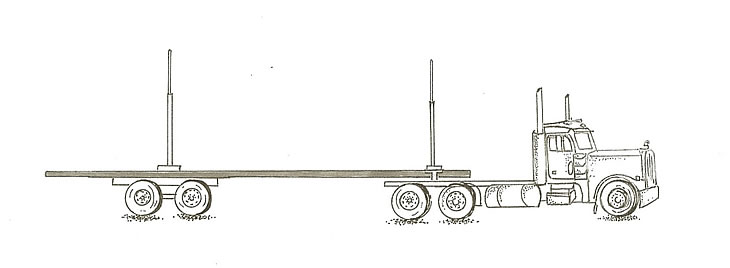Transportation
Description
The final harvesting step is the transportation of the trees or logs to the mill and/or a forwarding location such as the shipping yard for further transportation. There are very few scenarios where the timber harvested is not first moved off-site by truck.
Depending on the distance traveled, trucking can be a very expensive component of the overall harvest. It is therefore very important to optimize the payload, and in most cases this means maximizing the payload. From the public’s perspective, the transportation of logs is also the most visible part of a logging operation. The transportation is also affected by a host of regulations.
Trucks come in different configurations, and all have certain advantages and disadvantages. The first consideration is what form the product is. This can be tree-length, logs, or short-wood - defined as logs short enough to be stacked across the deck of the truck - or it may be in some processed form such as wood chips. A consideration when selecting a truck is the machinery used to load and unload the trucks.
Mechanical Configuration
Semi-trailers have wheels at the rear of the trailer and are supported at the front by the tractor, attached to the tractor by a kingpin. When not attached to the tractor, the front of the trailer must be supported, usually by downriggers or landing gear. Semi-trailers can have single, tandem, and tri-axle configurations.

Figure 1 - Semi-truck longwood.
Full trailers have a set of wheels at the front and rear of the trailer and are attached to the tractor, or another trailer, by a tongue and pintle hitch. They do not rely on the tractor to support any of the weight of the load. There is also the B-train configuration with the tractor pulling a fifth wheel dolly that supports a smaller semi-trailer.

Figure 2 - Truck with trailer attached.
A straight truck is a tractor with an extended chassis for carrying a load directly on the tractor. Instead of the box as shown in the picture, the truck and trailer has bunks for holding logs.
Axle configurations are variable and important for load capacity and traffic ability on soft roads (like northern conditions during break-up). Weight distribution also affects axle selection as well as legal Gross Vehicle Weight (GVW).

